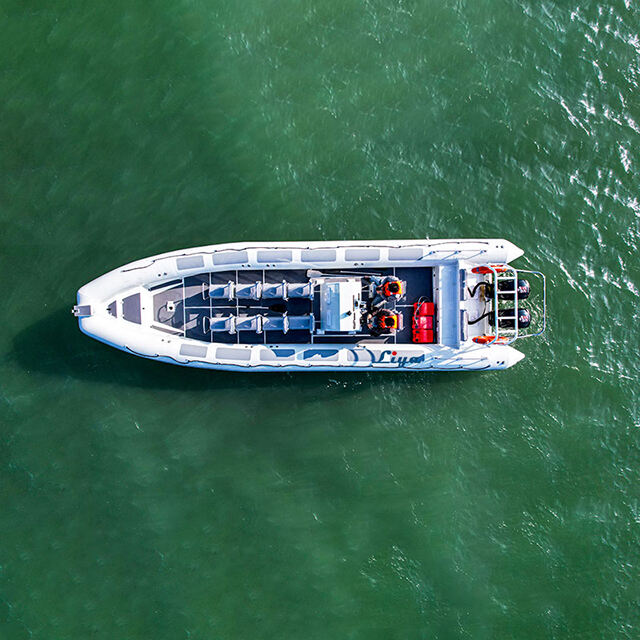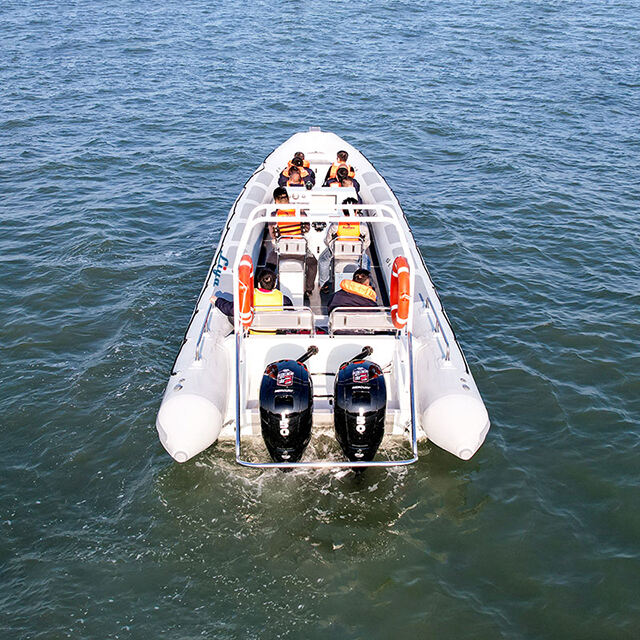Understanding the Superior Performance of Military-Grade Rigid Hull Inflatable Boats
When it comes to maritime operations in challenging environments, Navy RHIBs have established themselves as the gold standard for performance, reliability, and versatility. These sophisticated vessels combine the durability of a solid hull with the stability and buoyancy of inflatable tubes, creating an optimal platform for various military and professional maritime applications. As seasoned maritime professionals continue to face increasingly demanding conditions at sea, the unique attributes of Navy RHIBs prove invaluable for ensuring mission success and crew safety.
Essential Design Features of Modern Navy RHIBs
Advanced Hull Construction and Materials
The foundation of Navy RHIBs excellence lies in their innovative hull design and material selection. The rigid hull, typically constructed from marine-grade aluminum or advanced composites, provides exceptional strength and impact resistance. This robust base structure enables the vessel to cut through rough waters while maintaining structural integrity. The combination of lightweight materials and precision engineering results in an optimal power-to-weight ratio, enhancing both speed and fuel efficiency.
Modern manufacturing techniques incorporate specialized coatings and treatments that protect the hull from corrosion and marine growth, extending the vessel's operational lifespan. The integration of advanced composite materials in strategic locations further reduces weight while improving structural strength, allowing Navy RHIBs to perform consistently in the most demanding sea conditions.
Inflatable Collar Technology
The distinctive inflatable collars that characterize Navy RHIBs serve multiple critical functions. These high-strength, multi-chambered tubes are engineered using military-grade hypalon or polyurethane materials, providing exceptional resistance to UV radiation, chemical exposure, and physical abuse. The compartmentalized design ensures that even if one chamber is compromised, the vessel maintains its buoyancy and operational capabilities.
These collars also act as sophisticated shock absorbers, cushioning impact with waves and reducing crew fatigue during extended operations. The increased beam width provided by the tubes enhances stability, particularly during high-speed maneuvers or when operating in challenging sea states. This unique design feature makes Navy RHIBs particularly effective in search and rescue operations where stability and shock mitigation are paramount.

Performance Capabilities in Extreme Conditions
Superior Stability and Maneuverability
Navy RHIBs excel in maintaining stability across a wide range of sea conditions. The combination of a deep-V hull design and inflatable collar creates an exceptionally stable platform that can handle rough seas while maintaining directional control. This stability is crucial for maritime interdiction operations, personnel transfer, and tactical maneuvers where precise control is essential.
The advanced hull design allows Navy RHIBs to plane efficiently, reducing water resistance and enabling high-speed operations even in challenging conditions. The responsive handling characteristics provide operators with the confidence to execute complex maneuvers while maintaining crew and passenger safety. This level of performance makes these vessels particularly valuable for rapid response scenarios and time-critical missions.
All-Weather Operations Capability
Navy RHIBs are engineered to operate effectively in diverse weather conditions, from calm seas to severe storms. The vessels' self-draining decks and specialized bilge systems efficiently manage water ingress, maintaining vessel stability and crew safety. Advanced navigation and communication systems remain fully functional in extreme weather, ensuring mission capability is maintained regardless of environmental conditions.
The robust construction and reliable propulsion systems enable Navy RHIBs to operate in temperatures ranging from arctic to tropical, demonstrating exceptional versatility across different climatic zones. Special consideration in design and material selection ensures that critical systems continue to function reliably in both freezing conditions and high-temperature environments.
Operational Versatility and Mission Adaptability
Modular Design Benefits
Modern Navy RHIBs feature modular designs that allow rapid reconfiguration for different mission profiles. Quick-mount hardware points and standardized interfaces enable the installation of specialized equipment, from weapons systems to surveillance gear, without compromising the vessel's core capabilities. This adaptability ensures that a single platform can effectively serve multiple operational requirements.
The modular approach extends to seating arrangements, cargo configurations, and specialized mission equipment, allowing operators to optimize the vessel for specific tasks while maintaining the ability to quickly adapt to changing mission requirements. This versatility makes Navy RHIBs cost-effective assets for organizations requiring multi-mission capabilities from a single platform.
Enhanced Payload Capacity
Despite their relatively compact size, Navy RHIBs offer impressive payload capabilities. The optimized hull design and buoyancy characteristics allow these vessels to carry substantial loads while maintaining performance and handling characteristics. This capacity enables the transport of personnel, equipment, and supplies necessary for extended operations or complex missions.
The strategic placement of load points and reinforced deck areas ensures that heavy equipment can be safely secured without compromising vessel stability or performance. This payload flexibility, combined with the vessels' superior seakeeping abilities, makes Navy RHIBs invaluable assets for maritime operations requiring significant cargo or equipment transport capabilities.
Frequently Asked Questions
What maximum sea state can Navy RHIBs safely operate in?
Navy RHIBs are typically designed to operate safely in sea state 5 conditions, with significant wave heights up to 4 meters. However, specific operational limits depend on the vessel's size, design, and configuration. Many modern Navy RHIBs can maintain operational capability in even more challenging conditions when operated by experienced crews.
How does the maintenance requirement of Navy RHIBs compare to traditional patrol boats?
Navy RHIBs generally require less intensive maintenance than traditional patrol boats due to their simpler construction and fewer complex systems. Regular inspection of the inflatable collars, hull integrity, and propulsion systems is essential, but the overall maintenance burden is typically lower, resulting in reduced lifecycle costs and improved operational availability.
What is the typical service life of a Navy RHIB?
With proper maintenance and care, Navy RHIBs can remain in service for 15-20 years or more. The rigid hull structure typically maintains its integrity for the entire service life, while inflatable collars may require replacement every 7-10 years depending on usage patterns and environmental exposure. Regular maintenance and proper storage significantly extend operational lifespan.

